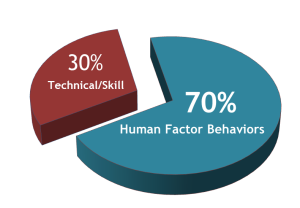
The High Cost of Hiring Mistakes
Hiring the right person for the job is a challenging assignment. It’s not only difficult to do; it is costly when we miss it. It is costly in terms of turnover costs, and it is costly in terms of poor productivity.
The True Cost of Turnover
The Department of Labor estimates that it costs between 10 and 20 times a person’s weekly wage to turn them over, which is for entry-level people! For qualified to journey-level employees, it is considerably more expensive than that. In addition to the simple replacement costs of recruiting, advertising, interviewing, and other onboarding costs, one must consider lost opportunity, angry customers, and other adverse effects of a poor hiring decision. It’s a significant number, and if it were a line item on anyone’s budget, people would pay much more attention to it.
The Impact of Sub-Standard Performance
As costly as turnover is, sub-standard or poor job performance that results from a “bad” hire is equally devastating in terms of cost. There are considerable differences in job performance among your employees, and, as you know, those differences are all bottom-line considerations.
The Underestimated Differences in Performance
The differences are more extensive than you might think. Suppose you ask a supervisor who oversees about 20 people to name their “best” and “worst” employees in a given job category. In that case, he’ll have no problem doing it. Then, ask him how much more productive his “best” is than his “worst.” He will tell you—incorrectly—the difference is 10 to 15 percent. If you push him hard, you may be able to get him to suggest the difference is as high as 30 percent. Rarely will the estimate be over 30 percent. Thirty percent sounds like a lot to most supervisors, and it is. Suppose you could increase productivity by 30 percent (or even 10 percent, for that matter). In that case, you’d put big dollars on your bottom line.
Uncovering the True Performance Gap
Controlled experimentation, however, has shown that those estimates are conservative. For example, researchers observed a group of clerical people in one study. They counted the number of pieces of paper they filed daily. The results show that the “best” clerks were two and three times more productive than their “barely acceptable” counterparts. The difference in performance is significant.
The Importance of Effective Hiring
Lowering turnover and increasing productivity begins with selecting the right person. Interviews do not predict job performance. The probability of picking the right person is 50/50. Therefore, anything you can do to increase the probability beyond pure chance is worth doing. It may cost a little upfront, but you will save big dollars on the other end.
Conclusion: Making Informed Hiring Decisions for Better Outcomes
The high cost of hiring mistakes, whether through turnover or poor performance, underscores the importance of making informed hiring decisions. The impact of performance differences among employees can be significant and directly affects your bottom line. Investing in tools like those offered by Scheig Solutions can increase your chances of selecting the right candidates and ultimately save your organization both time and money in the long run. Hiring is a critical aspect of business success, and it’s worth the effort to get it right.
Enhancing Hiring with Scheig Solutions
Scheig Solutions develops job-specific pre-employment assessments, interview questions, and performance evaluations designed to identify applicants who are a good match for the job. They have programs designed explicitly for motorcoach drivers, school bus drivers, and diesel technicians. They have been in business for over 30 years as recognized leading providers of behaviorally based hiring tools.
For more information, contact Chris Fisher at (800) 999-8582 or visit www.scheig.com.



